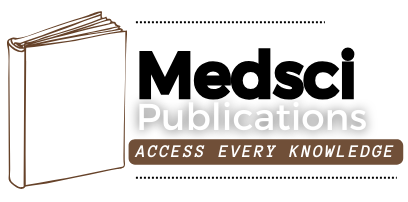Development and Validation of a Food Frequency Questionnaire for Dietary Antioxidant Intake among Prediabetic Individuals in the South Indian Population
DOI:
https://doi.org/10.55489/njcm.160220254968Keywords:
24-hour Dietary recall, Oxidative stress, Pearson correlation, Public HealthAbstract
Background: Prediabetes is a growing global public health concern, with dietary factors playing a major role in its progression to type 2 diabetes. Antioxidants can mitigate oxidative stress, a major contributor to prediabetes. This study developed a Food Frequency Questionnaire (FFQ) to assess the intake of key antioxidants, including vitamin C and E, selenium and zinc among prediabetic population in Chennai, India.
Methodology: The food list was based on the Indian Food Composition Table (2017), and the portion sizes and frequencies were derived through a focus group discussion with registered dietitians and physicians. The FFQ intake data were compared with the mean of two 24-hour dietary recall (DR) using Pearson correlation analysis.
Results: Strong correlations were observed for vitamin C (r=0.909) and vitamin E(r=0.915), and moderate correlations were observed for selenium (r = 0.696), and zinc (r = 0.706), with significant results (p < 0.001 for vitamin C, E, selenium, and p = 0.036 for zinc).
Conclusion: The results indicated good agreement between the FFQ and DR, validating the developed FFQ as a reliable tool for estimating antioxidant intake in prediabetic individuals. This tool is useful for monitoring antioxidant intake in both clinical and public health settings.
References
Anjana RM, Unnikrishnan R, Deepa M, et al. Metabolic non-communicable disease health report of India: the ICMR-INDIAB national cross-sectional study (ICMR-INDIAB-17). Lancet Diabetes Endocrinol. 2023;11(7):474-89. DOI: https://doi.org/10.1016/S2213-8587(23)00119-5 PMID: 37301218.
International Diabetes Federation (IDF). IDF Diabetes Atlas, 10th edn. Brussels, Belgium: IDF; 2021. 35914061. Available at: https://diabetesatlas.org/atlas/tenth-edition/
World Health Organization (WHO). Definition and diagnosis of diabetes mellitus and intermediate hyperglycaemia: report of a WHO/IDF consultation. Geneva: World Health Organization; 2006. Available at: https://www.who.int/publications/i/item/definition-and-diagnosis-of-diabetes-mellitus-and-intermediate-hyperglycaemia
Balci B, Tekce BK, Aktas G. Evaluation of serum oxidative stress levels and antioxidant capacity in prediabetes. Adv Redox Res. 2024; 12:100106. DOI: https://doi.org/10.1016/j.arres.2024.100106
Kanwugu ON, Glukhareva TV, Danilova IG, et al. Natural antioxidants in diabetes treatment and management: prospects of astaxanthin. Crit Rev Food Sci Nutr. 2022;62(18):5005-28. DOI: https://doi.org/10.1080/10408398.2021.1881434 PMid:33591215
Krawczyk M, Burzynska-Pedziwiatr I, Wozniak LA, et al. Impact of polyphenols on inflammatory and oxidative stress factors in diabetes mellitus: nutritional antioxidants and their application in improving antidiabetic therapy. Biomolecules. 2023;13(9):1402. DOI: https://doi.org/10.3390/biom13091402 PMid:37759802 PMCid:PMC10526737
Van der Schaft N, Schoufour JD, Nano J, et al. Dietary antioxidant capacity and risk of type 2 diabetes mellitus, prediabetes and insulin resistance: the Rotterdam Study. Eur J Epidemiol. 2019; 34:853-61. DOI: https://doi.org/10.1007/s10654-019-00548-9 PMid:31399939 PMCid:PMC6759671
Bouayed J, Bohn T. Exogenous antioxidants-Double‐edged swords in cellular redox state: Health beneficial effects at physiologic doses versus deleterious effects at high doses. Oxid Med Cell Longev. 2010;3(4):228-37. DOI: https://doi.org/10.4161/oxim.3.4.12858 PMid:20972369 PMCid:PMC2952083
Montonen J, Knekt P, Jarvinen RI, et al. Dietary antioxidant intake and risk of type 2 diabetes. Diabetes care. 2004;27(2):362-6. DOI: https://doi.org/10.2337/diacare.27.2.362 PMid:14747214
Shim JS, Oh K, Kim HC. Dietary assessment methods in epidemiologic studies. Epidemiol. Health. 2014;36. DOI: https://doi.org/10.4178/epih/e2014009 PMid:25078382 PMCid:PMC4154347
Taro Y. Statistics, an introductory analysis, 2nd ed. New York: Harper and Row; 1967.
Mishra D, Singh HP. Kuppuswamy's socioeconomic status scale-a revision. The Indian J Pediatr. 2003;70(3):273-4. DOI: https://doi.org/10.1007/BF02725598 PMid:12785303
Longvah T, Ananthan R, Bhaskarachary K, Venkaiah K. Indian Food Composition Tables 2017: National Institute of Nutrition, Indian Council of Medical Research, Hyderabad, Telangana, India. Available at: https://www.nin.res.in/ebooks/IFCT2017.pdf
Sajjanar DS, Hundekari IA, Udgiri R, et al. Development and Validation of a Food Frequency Questionnaire for Use in Epidemiological Studies Among North Karnataka Population. Natl J Community Med. 2024;15(04):289-98. DOI: https://doi.org/10.55489/njcm.150420243758
Kuppuswamy R, Venugopal V, Subramaniam A. Development and validation of a food frequency questionnaire for pregnant women of Tamil Nadu, India. Int J Nutr Pharmacol Neurol Dis. 2018;8(3):86-91. DOI: https://doi.org/10.4103/ijnpnd.ijnpnd_27_18
Cade J, Thompson R, Burley V, et al. Development, validation and utilisation of food-frequency questionnaires-a review. Public Health Nutr.2002;5(4):567-87. DOI: https://doi.org/10.1079/PHN2001318 PMid:12186666
Vijay A, Mohan L, Taylor MA, et al. The evaluation and use of a food frequency questionnaire among the population in Trivandrum, south Kerala, India. Nutrients. 2020;12(2):383. DOI: https://doi.org/10.3390/nu12020383 PMid:32024020 PMCid:PMC7071154
Hebert JR, Gupta PC, Bhonsle RB, et al. Development and testing of a quantitative food frequency questionnaire for use in Kerala, India. Public Health Nutr.1998;1(2):123-30. DOI: https://doi.org/10.1079/PHN19980019 PMid:10933409
Hebert JR, Gupta PC, Bhonsle RB, et al. Development and testing of a quantitative food frequency questionnaire for use in Gujarat, India. Public Health Nutr. 1999;2(1):39-50. DOI: https://doi.org/10.1017/S1368980099000051 PMid:10452730
Shaikh NI, Frediani JK, Ramakrishnan U, et al. Development and evaluation of a Nutrition Transition-FFQ for adolescents in South India. Public Health Nutr. 2017;20(7):1162-72. DOI: https://doi.org/10.1017/S1368980016003335 PMid:28069093 PMCid:PMC10261504
Pandey D, Bhatia V, Boddula R, et al. Validation and reproducibility of a food frequency questionnaire to assess energy and fat intake in affluent north Indians. Natl Med J India. 2005;18(5):230-5.
Zujko ME, Witkowska AM. Dietary antioxidants and chronic diseases. Antioxidants. 2023;12(2):362. DOI: https://doi.org/10.3390/antiox12020362 PMid:36829921 PMCid:PMC9952631
Zujko ME, Waśkiewicz A, Drygas W, et al. Dietary habits and dietary antioxidant intake are related to socioeconomic status in Polish adults: A nationwide study. Nutrients. 2020;12(2):518. DOI: https://doi.org/10.3390/nu12020518 PMid:32085545 PMCid:PMC7071315
Zulkifli SN, Stella MY. The food frequency method for dietary assessment. J. Am. Diet. Assoc. 1992;92(6):681-6. DOI: https://doi.org/10.1016/S0002-8223(21)00706-9 PMid:1607563
Jansen E, Ruskovska T. Serum biomarkers of (anti) oxidant status for epidemiological studies. Int J Mol Sci. 2015;16(11):27378-90. DOI: https://doi.org/10.3390/ijms161126032 PMid:26580612 PMCid:PMC4661890
Toft U, Kristoffersen L, Ladelund S, et al. Relative validity of a food frequency questionnaire used in the Inter99 study. Eur J Clin Nutr. 2008 ;62(8):1038-46. DOI: https://doi.org/10.1038/sj.ejcn.1602815 PMid:17538538
Downloads
Published
How to Cite
Issue
Section
License
Copyright (c) 2025 Sowmya R, Supriya V, Rajkumar M, Silambuselvi K

This work is licensed under a Creative Commons Attribution-ShareAlike 4.0 International License.
The authors retain the copyright of their article, with first publication rights granted to Medsci Publications.










